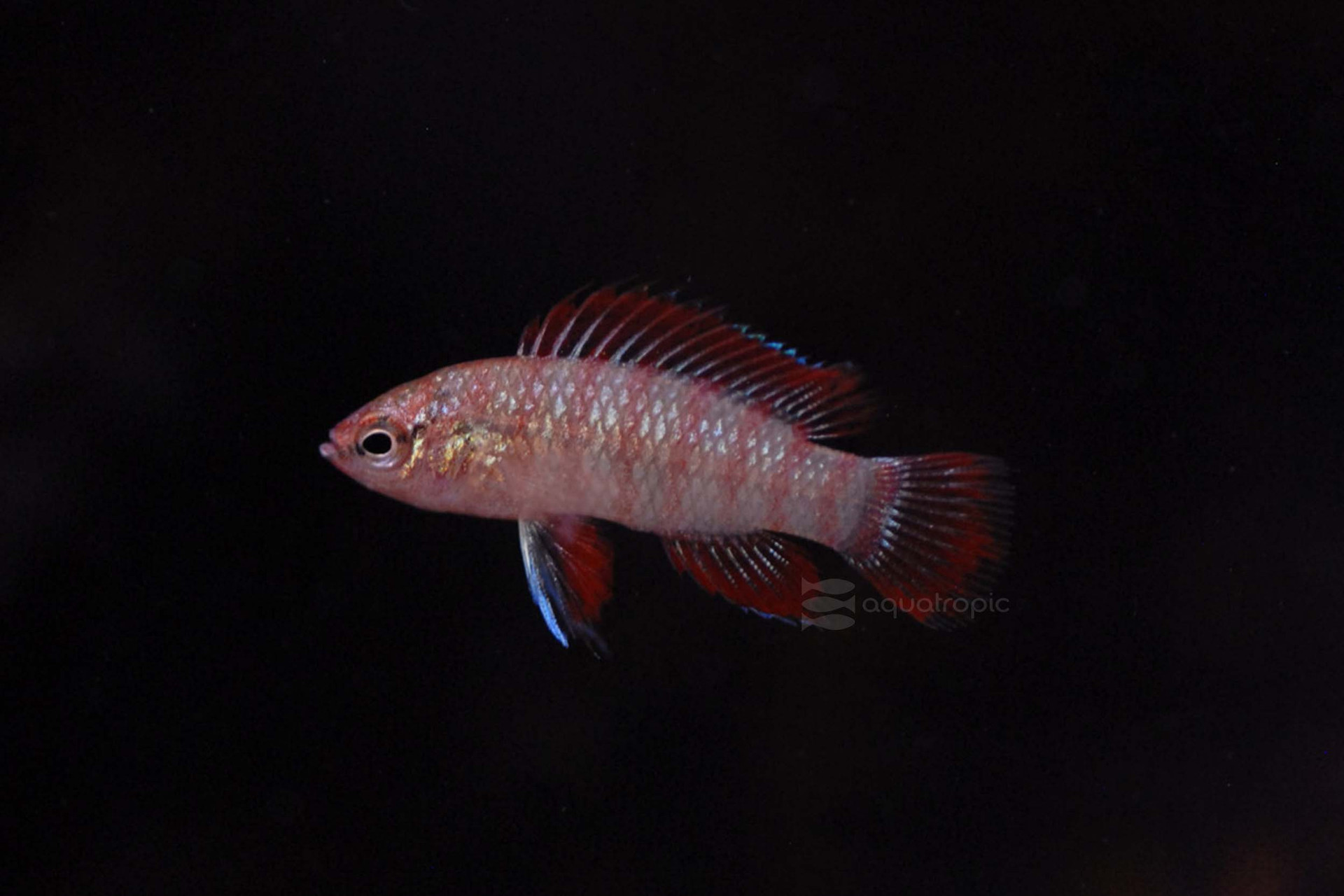One Badis Little Fish

The Scarlet Badis is actually not a Badis, but a Dario, and more specifically, Dario dario. Regardless of their name or designation, this is one of the best fish to keep in a nano-aquarium. Males are brilliantly colored and stay very small, hardly ever reaching ¾ of an inch and females are somewhat more subdued color wise and don't get bigger than ½ of an inch. Wild specimens are collected in very clear, sand bottomed freshwater streams in India.
This is for the most part, an extremely docile fish, with the notable exception of males fighting with other males for territory. In addition they are bad at seeking out food, and are quickly out-competed by even fairly docile tank mates. This temperament can make it a challenge to find other fish to share their display, so they are often kept in a “species only” aquarium. In larger tanks, more males can be kept, but enough space must be provided for each male to have a territory without clear lines of sight to the other males. One male in a densely planted aquarium with two or three females makes for an amazing desktop display. When kept like this, they are fairly vigorous eaters and large foods should be avoided as they will eat themselves into obesity and suffer dramatically more health issues. In house, we have very good luck feeding them artemia nauplii, daphnia and a small sized, high quality pellet in moderation.
Dario dario is relatively easy to breed in captivity. When mature, the male will invite a female into his spawning area, and they will spawn. She will deposit eggs on the underside of just about anything, and then he will remove her from the area and defend the eggs. Once eggs are deposited, either the eggs or the fish should be removed from the display as the adults will cannibalize the eggs, (even the defender will eat them over time). They will hatch out in about 3 days and take another 7 or so to consume their yolk sack. At this point, they are VERY small and will need a protozoan diet, a culture of which is often called “infusioria.” this, in an of itself, is not very challenging, but alas, is another article. This ease of reproduction means that there is now a steady supply of aquacultured specimens available which are even more brightly colored, hardy, and ready for processed food than their wild counterparts.
Keeping the Scarlet Badis is pretty straightforward from a water quality standpoint. They thrive in a neutral (give or take) pH system, and are just fine in water that is incredibly soft or extraordinarily hard. We do find that they do better when kept on the cool side for a tropical aquarium, doing best between 75 and 80 degrees. They are susceptible to nitrogen spikes and will show lesions if exposed to them. Having an established filter and utilizing restrained feeding will go a long way to ensure the health of your display for the entire 3 to five year life span of these fish.
If you are looking for a desktop fish with wild color and interesting behavior, the Scarlet Badis should be on your list. They are tiny, gorgeous, easy to care for and breed. They thrive in normal aquarium conditions and don't require any out of the ordinary husbandry to keep them happy long term. A small harem of these fish would be perfect in a planted 10 gallon aquarium. If you're looking for just such a display, head over to your LFS and ask them about getting you an aquacultured Scarlet Badis from Aquatropic today!